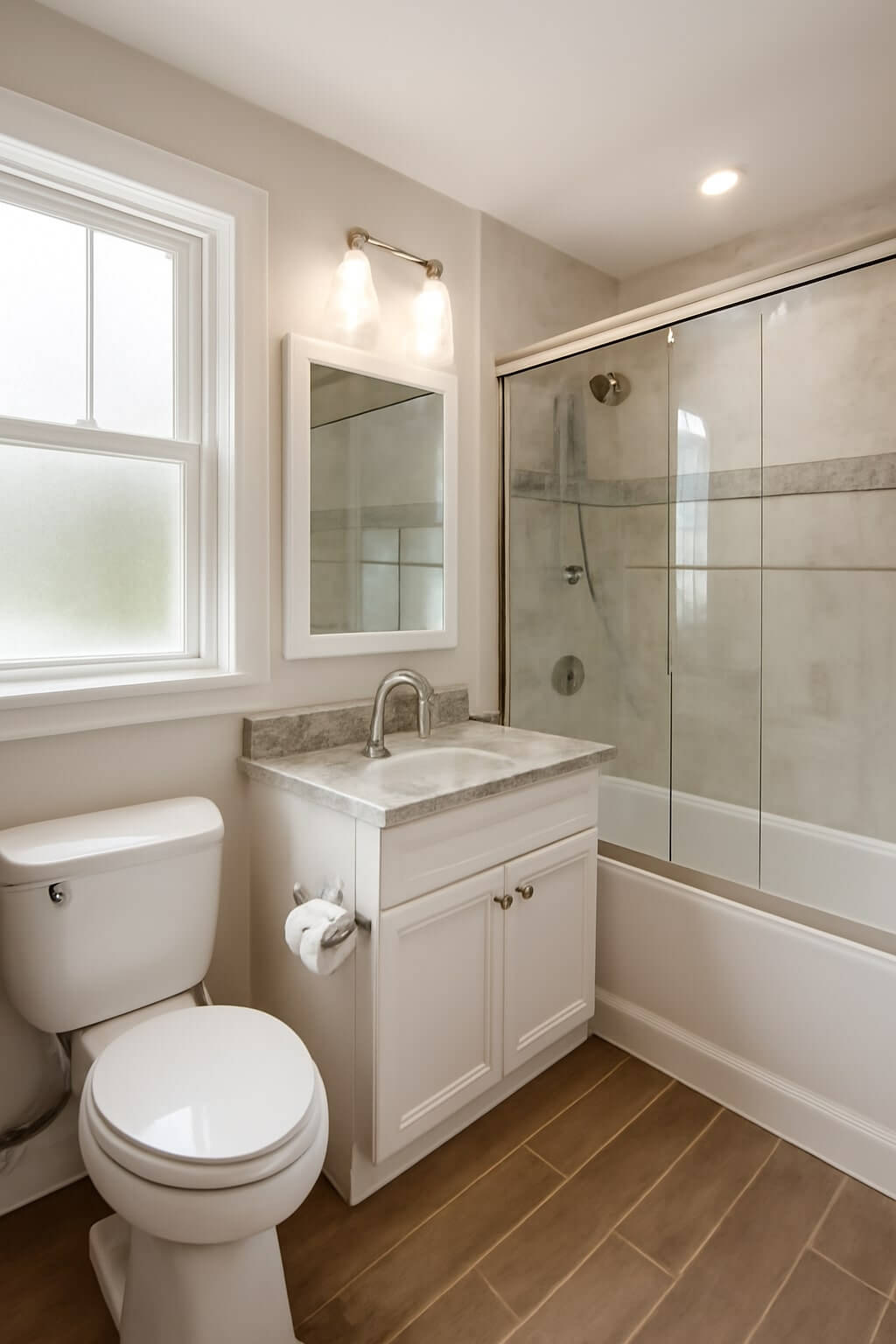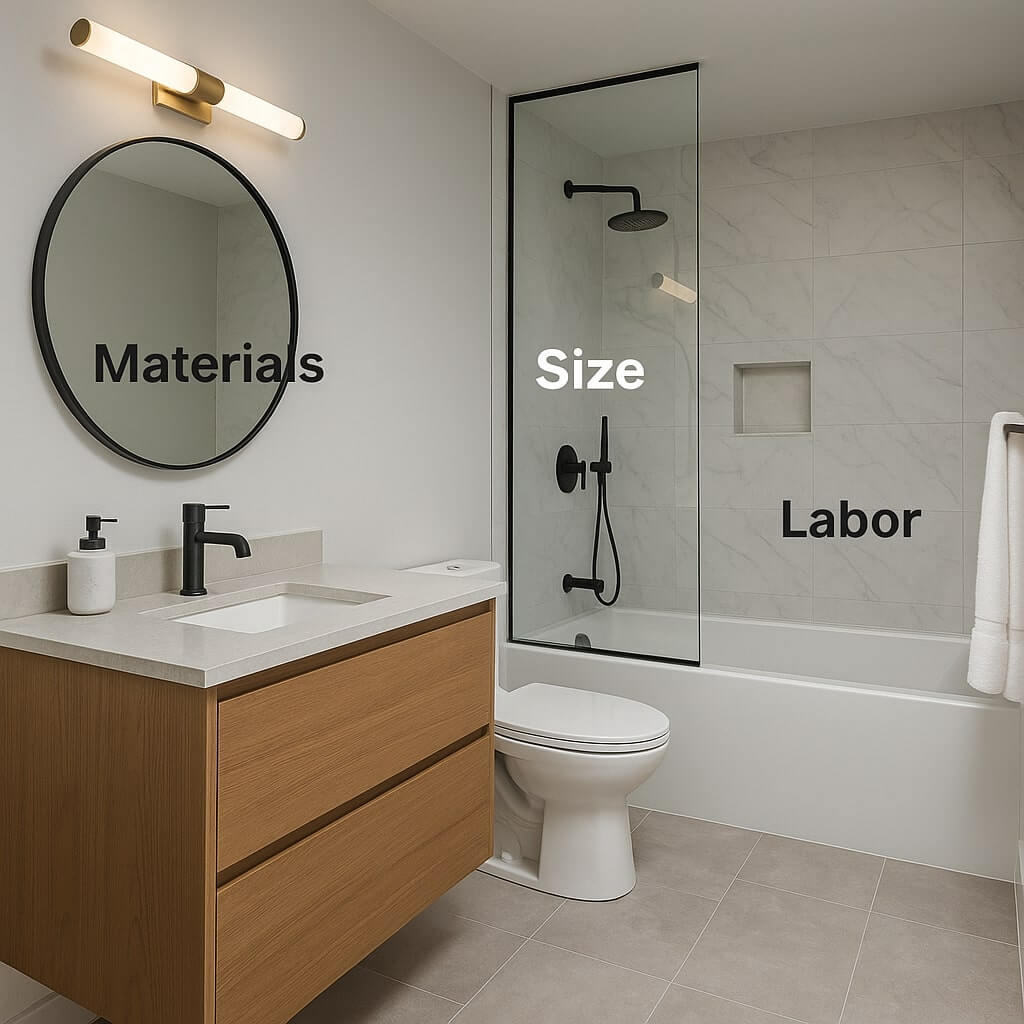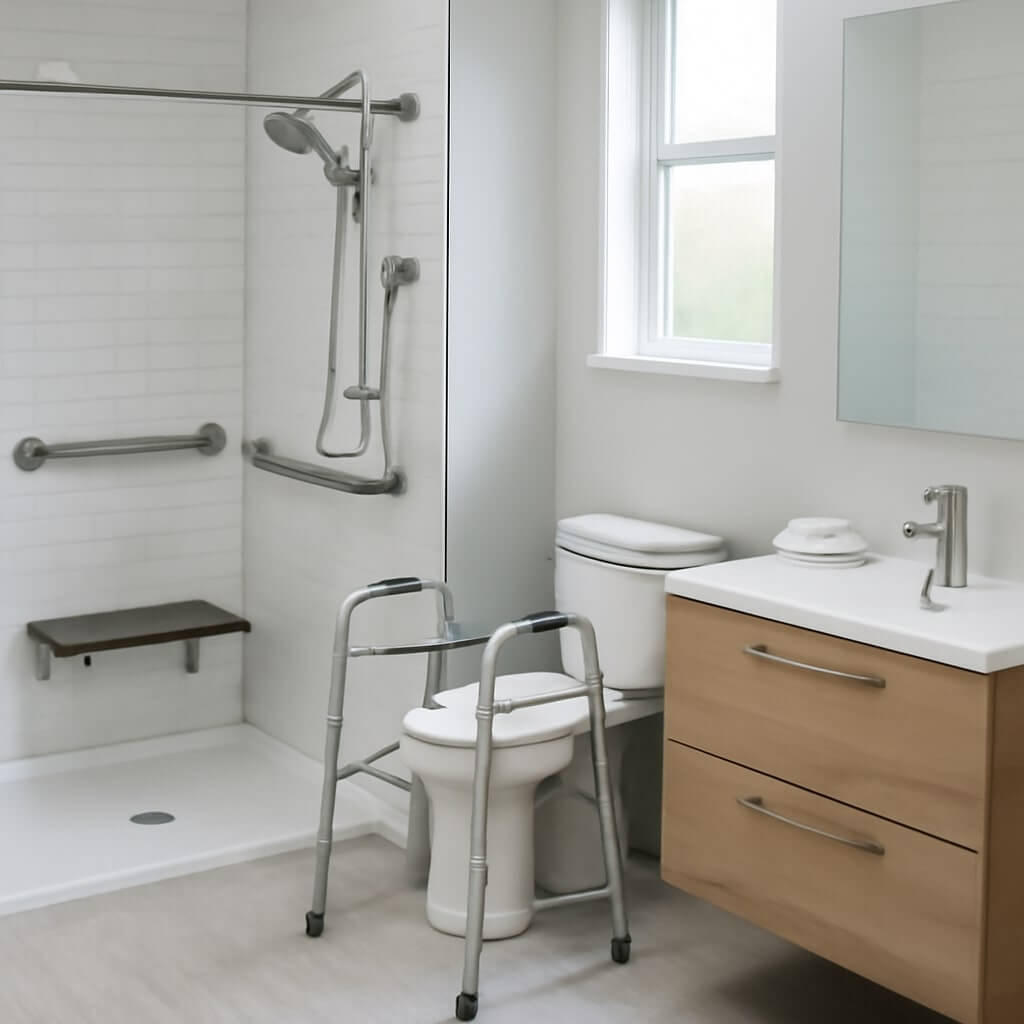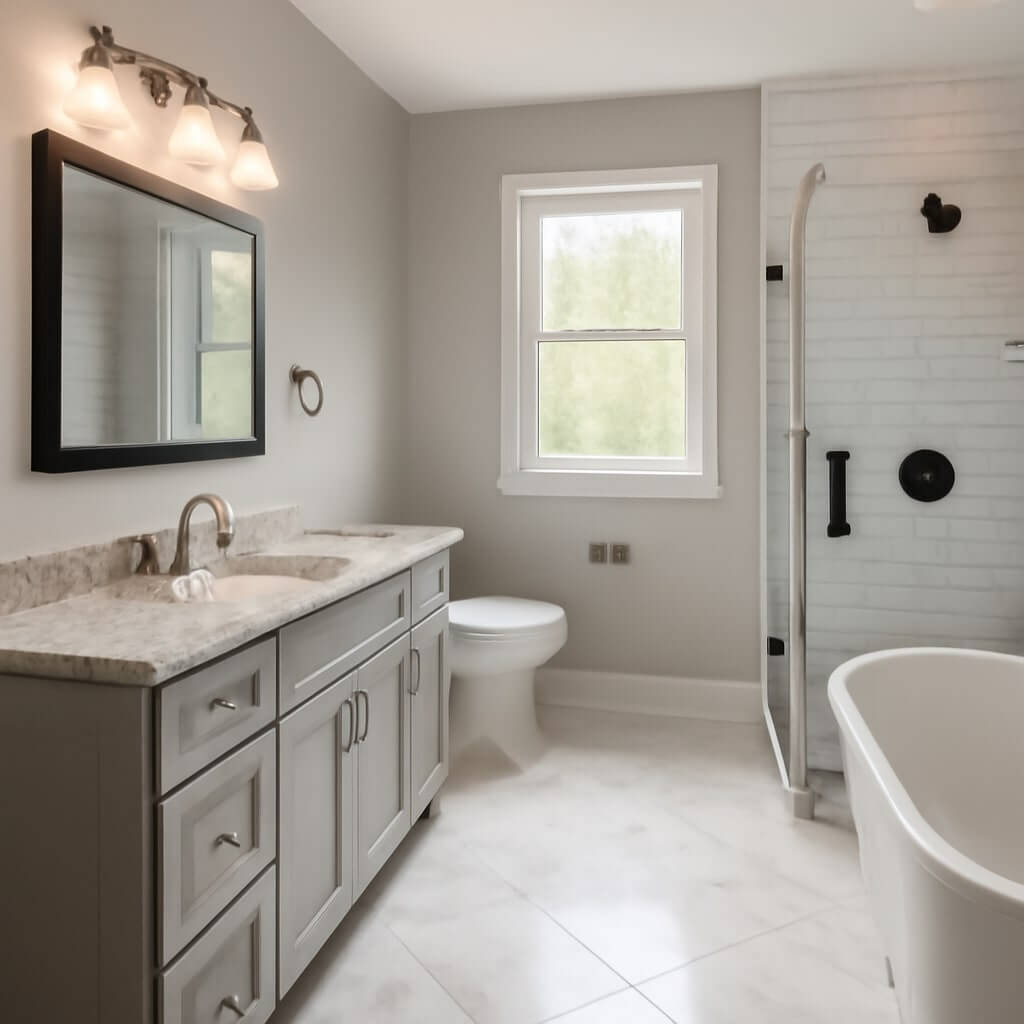When considering a bathroom remodel, you need to understand how depreciation affects your investment. Different materials and fixtures have varying lifespans, which can influence your future renovation plans and potential returns. For example, shower fixtures might last a decade, while ceramic tiles could endure for much longer. Knowing these details helps you strategize effectively. But what factors should you weigh to maximize your return? Let’s explore further.
Key Takeaways
- The typical lifespan of bathroom fixtures ranges from 10 to 15 years, influencing their depreciation rate.
- Ceramic tiles can last over 50 years, contributing to long-term value retention.
- Natural stone materials require maintenance but also offer durability, affecting depreciation positively.
- Grout usually lasts between 5 to 15 years, impacting overall remodel longevity and value.
- High-quality materials and modern features minimize depreciation and enhance resale value in competitive markets.
Understanding Depreciation in Home Renovations
When you consider a bathroom remodel, it’s essential to understand how depreciation impacts your investment.
Depreciation affects the value of your home equity, as the return on your remodeling investment can diminish over time. The timing of your renovation plays an important role; remodeling during a housing market upswing can enhance your home’s value more markedly than during a downturn.
Keep in mind that high-quality materials and energy-efficient fixtures may retain value longer, further influencing depreciation.
Factors Affecting the Depreciation of a Bathroom Remodel
When considering the depreciation of a bathroom remodel, the quality of materials you choose plays a vital role.
Higher-quality materials tend to retain value better, while cheaper options may lead to quicker depreciation.
Additionally, local real estate trends can greatly impact how your remodel is valued over time, as demand and market conditions fluctuate.
Quality of Materials
The quality of materials used in a bathroom remodel plays an essential role in determining its longevity and depreciation rate. High-quality materials, known for their durability, resist wear and tear better than cheaper alternatives.
For instance, ceramic tiles often outperform vinyl regarding lifespan and maintenance. Additionally, aligning your choices with current design trends can enhance the aesthetic appeal, potentially increasing the remodel’s value.
Investing in durable materials and timeless designs guarantees that your remodel remains attractive longer, ultimately slowing down depreciation. You’ll want to take these factors into account carefully to maximize your return on investment.
Local Real Estate Trends
While selecting high-quality materials can enhance a bathroom remodel’s appeal and longevity, local real estate trends greatly influence its depreciation.
In a fluctuating local market, buyer preferences shift, affecting how much value they assign to your remodel. If modern, eco-friendly features are in demand, your investment will hold up better.
Conversely, if traditional styles dominate, your contemporary updates mightn’t resonate with buyers, leading to quicker depreciation.
Staying informed about local market dynamics helps you align your remodel with what potential buyers want, ultimately maximizing your return on investment and extending the lifespan of the remodel’s value.
Typical Lifespan of Bathroom Components
Understanding the typical lifespan of bathroom components is vital for homeowners planning a remodel. Generally, shower fixtures last around 10 to 15 years, depending on usage and maintenance. High-quality materials can extend this lifespan considerably.
Tile selection also plays an important role; ceramic tiles can last 50 years or more, while natural stone may require more upkeep but offers durability. Additionally, grout typically lasts about 5 to 15 years, depending on quality and proper sealing.
How to Calculate Depreciation for Your Remodel
To calculate depreciation for your bathroom remodel, start by determining your cost basis, which includes all expenses related to the project.
Next, select an appropriate depreciation method, such as straight-line or declining balance, to reflect the remodel’s value over time.
Understanding these steps will help you accurately assess the financial impact of your investment.
Determine Cost Basis
Calculating the cost basis of your bathroom remodel is essential for accurate depreciation.
Understanding cost allocation helps you determine the financial impact of your investment recovery. To calculate your cost basis, follow these steps:
- Identify Direct Costs: Include materials, labor, and any permits required for the remodel.
- Add Indirect Costs: Factor in fees for design services, inspections, and sales tax.
- Document Additional Improvements: Consider any upgrades that enhance the value, like energy-efficient fixtures.
This thorough approach guarantees you correctly assess your remodel’s financial implications and facilitates ideal depreciation calculations.
Select Depreciation Method
While selecting a depreciation method for your bathroom remodel, it’s essential to take into account the most suitable approach that aligns with your financial goals and the nature of the improvements made.
You’ll typically choose between straight-line and accelerated depreciation methods. The straight-line method spreads the cost evenly over the asset’s useful life, offering predictable financial implications.
Conversely, accelerated methods allow for larger deductions in the early years, enhancing cash flow.
Analyze your situation carefully; the choice of depreciation methods can greatly affect your tax liabilities and overall financial strategy related to your remodel investment.
Tax Implications of Bathroom Renovations
Understanding the tax implications of a bathroom renovation can greatly impact your financial planning.
When considering renovations, you should be aware of the following:
- Tax Deductions: Certain renovations may qualify as tax deductions, particularly if they’re made for medical reasons.
- Capital Improvements: Upgrades can increase your home’s cost basis, potentially reducing capital gains taxes when selling.
- Depreciation: If you rent out your property, you might be able to depreciate the renovation costs over time, which can lessen your taxable income.
Be sure to evaluate these factors to understand the renovation impact on your taxes.
Strategies to Maximize Your Bathroom Remodel Investment
Maximizing your bathroom remodel investment requires a strategic approach that focuses on both immediate enhancements and long-term value.
Prioritize features with a strong return on investment, such as energy-efficient fixtures and high-quality materials. Stay informed about current design trends, as modern aesthetics can considerably boost your home’s appeal.
Consider layout improvements that increase functionality, making the space feel larger and more inviting. Additionally, opt for timeless designs rather than fleeting trends to guarantee enduring value.
Finally, don’t overlook the importance of professional installation, which can enhance quality and longevity, ultimately safeguarding your investment for years to come.
When to Consider Selling After a Bathroom Remodel
When should you consider selling your home after a bathroom remodel? Timing considerations and current market conditions play essential roles in your decision.
Here are three key factors to evaluate:
- Return on Investment (ROI): Assess if your remodel aligns with local buyer preferences and potential appreciation.
- Market Trends: Analyze if your area is experiencing a seller’s market, which could maximize your selling price.
- Personal Circumstances: Consider life changes, such as job relocation or family growth, that might necessitate a move sooner rather than later.
Weighing these elements will help you determine the best time to sell.
Conclusion
To sum up, understanding the depreciation life of your bathroom remodel is essential for maximizing your investment. By recognizing the varying lifespans of components like fixtures, tiles, and grout, you can effectively plan for future renovations. Calculating depreciation not only aids in financial planning but also impacts tax considerations. Staying informed about these factors empowers you to make strategic decisions, whether you’re considering selling your home or simply enhancing its value over time.




